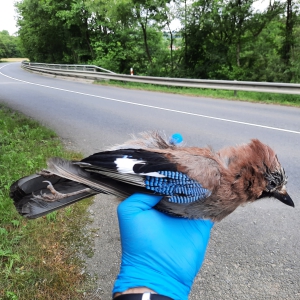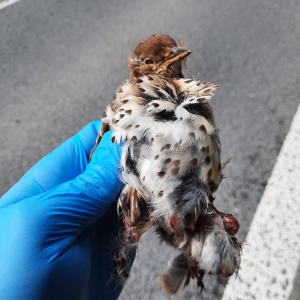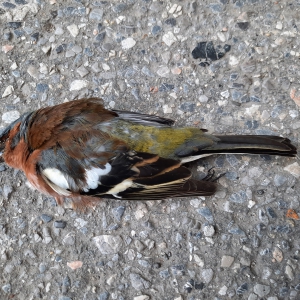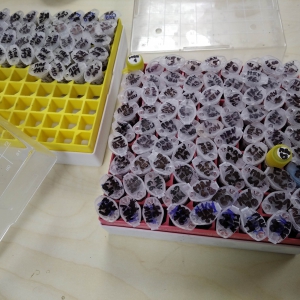The Museum of the Wallachia Region has joined the project of the National Animal Genetic Bank
The National Animal Genetic Bank (NGBŽ) is a network of institutions whose common interest is the long-term preservation of well-preserved genomic animal samples and the publication of data on these samples in public databases so that they are available for further research. Genomic samples can be used in the evaluation of the quality of populations, their relatedness and genetic diversity, differences within the range of species and their subspecies, etc. can also be monitored. to the network is voluntary and its operation is not subject to any binding internal regulations. The NGBŽ ÚBO is linked both to the Vertebrate Evidence Collection of the ÚBO and to other relevant collections, i.e. it strives to preserve information on the places of storage of all material from a specific individual (e.g. if a genetic sample of an animal is stored in the bank, which was used to create a preparation in one of the natural history museums). GB ÚBO is registered in the international register of scientific collections Global Registry of Scientific Collections (GRSciColl) under the code IVB and is also a member of the international network of genetic collections of biodiversity Global Genome Biodiversity Network (GGBN), on whose data portal it is also possible to search for the necessary samples (Repository IVB). In the spring of 2019, the Museum of the Wallachia Region (MRV) signed a Memorandum of Cooperation to join the network of NGBŽ institutions. In connection with the legislative requirements for the collection of genomic material, we obtained a permit for the collection of protected organisms from the Zlín and Moravian-Silesian Regions, including the Beskydy and White Carpathian Protected Areas. MRV samples from this collection area will therefore be published via GB ÚBO in public and international genomic databases.
On the basis of positive decisions and the granting of a collection permit, a so-called biorepository was created, a place where collections of genomic material are stored. For the needs of the biorepository, a freezer box was used, which is located in the renovated building of the Kinské Castle in Valašské Meziříčí. Samples of genomic material from individual animals are collected in 2 ml tubes with a solution of 96% ethyl alcohol and for better clarity and records are stored in plastic organizational boxes in the biorepository. Samples are taken from each found (mostly dead) animal in two test tubes, one remains part of the MRV collections and the other is sent to GB ÚBO for storage in a deep-freeze box (-80 °C) in the NGBŽ storage at the field station of ÚBO Mohelský mlýn. The samples will be published on the NGBŽ data portal with a link to the MRV and the possible inventory number of the preparation / collection item obtained from the specific individual from which the genomic sample was taken. We are currently recording samples from 121 animals, of which 56 are samples of fifteen specially protected species. All samples are uniquely marked and recorded in a summary table with detailed finding data on the individuals from which the sample was taken.
Due to the size of the territory, the collection of samples is irregular and methodologically not directly focused on any species of interest, samples are taken mainly from dead individuals, often knocked down on the road, from all vertebrate species and this in one year in units of individuals per village/district cadastre according to size or migratory abilities of the species so that the samples are representative in time and space. However, we also have animals in our collection area that would interest us, but it is not a targeted call to hunt, but with the coming autumn, for example, rodents move to cottages, where people set traps for them. We would be interested in some species accidentally killed in this way, for example wood dormouse or white-toothed mountain mouse or mountain shrew, because these are not quite common species and exceptionally found on the road compared to the paradoxically more common otters and beavers. Also, birds are often killed by hitting glass on buildings. It is enough to send a photo to the museum's zoologist by email or WhatsApp with the find data (date and place at tyller@muzeumvalassko.cz, mobile number 775284222) and if it were an animal from which we would like to take a sample, we would arrange to hand it over. Similarly, we recently called for information on the occurrence of a wild cat, whose finding data we are still waiting for. Individuals/cadavers that still have some fresh tissue on them are suitable for taking a genomic sample, it is not possible to take a high-quality sample from rotting meat, and a very small piece even measuring 0.5*0.5 cm is enough. RNDr. Zdenek Tyler.



